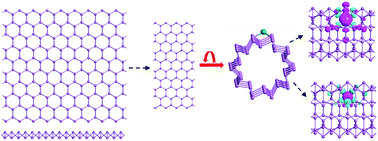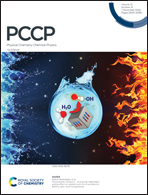Geometry, induced magnetism and modified electronic behaviors for magnetic atom adsorption on antimonene nanotubes
Abstract
Antimonene nanotubes, a class of important derivatives of the 2D counterpart (Sb monolayer), with transition metal (TM) atom adsorption were investigated systematically based on the first-principles calculations. For a stable geometry, the lengths of TM–Sb bonds on the tube surface strongly depend on their relative electronegativity. In particular, we find that the intrinsic magnetic moment magnitude of the TM atom plays a decisive role in inducing tube magnetism, and only TM atoms with a larger intrinsic magnetic moment (≥3.0 μB) can induce the magnetism for tubes. The strong interaction and coupling between the TM d-orbital and Sb p-orbital lead to variously favorable magnetic phases, such as the spin bipolar semiconductor and half-semiconductor, which is predicted to be stable beyond room temperature. In addition, the weakening or quenching of the magnetism for the adsorbed TM atom is intimately related to the expansion of the TM atom valence electron configuration and the charge transfer. Furthermore, the TM adsorption can also effectively regulate the tube carrier mobility to the difference of several orders of magnitude, and results in significant carrier polarity and spin polarity of mobility. A sensitive electric-magnetic coupling effect was also shown to cause continuous magnetic phase transition, providing more opportunity for obtaining magneto-electric materials.



 Please wait while we load your content...
Please wait while we load your content...